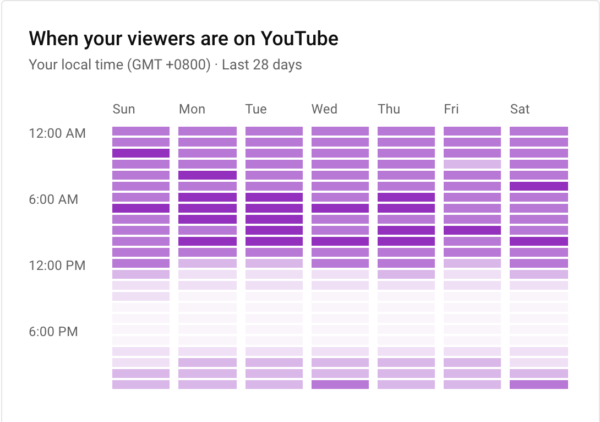
Starting a business comes with a full set of obstacles. If you’re just starting out, chances are you’re facing these obstacles with a smaller budget and more urgency. Regardless of the size of your business, it’s hard to be successful with no marketing foundation to reach customers. So, how can you maneuver startup marketing with the resources at your disposal?
As with any journey, the best way to reach the destination is to take one step at a time. Let’s break down the steps to your startup marketing strategy. We’ll include the basics of startup marketing and top strategies for startups. Next, we’ll cover finding and connecting with potential customers. And finally, we’ll see some examples of how to create a solid marketing foundation.
Understanding the basics of startup marketing
The first steps of startup marketing can look a lot like those of a business plan. If you find that you’ve already established any of these points, pat yourself on the back. You now have one less thing to do when creating your marketing plan. Here’s what to do after you’ve defined what your business is:
Limit your market
First, you should understand your market fit. A market fit tells you whether your product or service fills a gap or need for a specific group of people. In marketing, that group is called your “target audience.”
If you think your business is good for everyone, you could be too in love with your idea. Try stepping back and doing market surveys and research to find out more about your market fit. This will give you valuable insights, like whether your business is profitable.
Here are some questions you can ask yourself to define your market:
- What age(s) is my product/service for?
- What kind of person is most likely to buy it?
- Is it in demand?
- Can my buyer afford it?
- How much are they willing to pay?
These answers will not only define your target buyer but will also tell you if your idea is viable. For instance, people may want glue to re-stick their Post-it notes, but how many people would buy it? Research like this helps you know from the start.
Next, find out how specific the group is that needs your product or service. You don’t want a market that is too wide. A specific group of customers will be easier to market to and will have fewer competitors.
Don’t make the mistake of thinking a bigger audience means more money. Stand out as the one company unique enough for your target group. This will highlight your business as the one to choose. Selling cookbooks for Arabic speakers will be more niche than just selling cookbooks. One has a much clearer target audience than the other.
Create buyer personas
Once you understand your target audience and market fit, separate that group of people into a few buyer personas. Buyer personas are avatars of people who would find your product useful or desirable. You should build these like you would the characters of a short story, understanding them individually.
Let’s set up a quick example. Say, for instance, that you sell whiteboard markers that last longer than the average. To create buyer personas, you need to know why people want these markers. Perhaps because it’s expensive to replace whiteboard markers often and because it’s more eco-friendly to use them longer.
What kind of buyer would worry about these things? Here are two buyer personas for that scenario:
- Jennifer is the head of purchasing at a school. She is 38, great at her job, but deals with a lot of stress. She constantly receives requests for supplies but she must stick to the school’s limited budget. Her main concerns are staying on track with spending while giving employees and students what they need for a good learning environment.
- Pedro is in charge of supplies at a startup. In fact, maybe you hired him. He’s 31 and must balance the costs of keeping the company stocked and keeping costs low. With startup culture offering more and more perks like gourmet snacks and craft beer, his budget needs to stretch. Office supplies at Pedro’s work are often overlooked, and meetings run out of marker ink before the idea is finished.
Maybe your mind is already thinking of how to sell to these two buyers. Seeing your users as real people makes it much easier to figure out what they need to know in order to buy your product. This paves the way for your startup marketing strategy.
Keyword research
Keywords are the terms your user personas are using to find you online. This will depend on how ready they are to make a purchase, but for this post, we’ll focus on those that are ready to buy. To gather a primary keyword list you want to tackle, think of what people would search to find your business’s website.
Keywords can be single words like “plumber” or short phrases like “industrial-grade kitchen supplies.” They should reflect what you offer. To see if people search for your primary keywords, use free tools like Google Keyword Planner.
What are these terms good for? When you build your content marketing and online ads, these keywords will be vital for reaching people who want to find you.
Set achievable goals
How will you know if your startup marketing is on track?

Before you kick off your startup marketing strategy, it’s important that you know why you’re doing it. Do you want to launch with 1,000 potential customers on your email list? Maybe you want to achieve $100,000 in revenue by the end of the year. Goals will depend on the size and scope of every business.
Define a goal that is both challenging and achievable. Whatever you decide to tackle, stick with it. If you choose to go after 1,000 emails by launch day, communicate that to your team. Make sure everyone knows that’s the result you want and don’t change it halfway through the journey. Once you reach your goal, create a new one and work towards that.
Create your branding and style
Did you know your business should also have a persona? Your business may seem like it came straight from you, but it should have its own personality. That’s what will take it from “just another provider” to “brand we can’t do without.”
Creating your brand identity starts with understanding who you help and why you’re unique. Answering these questions will give you a clearer picture of your business’s identity.
- What kind of personality does your company have? Security companies tend to be reliable and smart, while many outdoor gear brands are adventurous and strong.
- What does your buyer or supporter feel after they come in contact with your brand? Are they empowered, relieved, energized?
- Why you? Every good business idea has competitors. That’s what validates your idea. How are you different than others in your industry?
- What’s your story? Try to not present yourself as the hero, but position yourself to be the best option or tool for your buyer, the actual hero. You are the sidekick that fights the dragon so they can rescue the princess.
Create a website
In the past, having a website was just an option. Businesses could rely on foot traffic, word-of-mouth, and other offline marketing tools to bring in customers. For better or for worse, those days are gone and your business will have to get on board with being online to market its products and services effectively.
Luckily, you can hire someone to create your website. There are lots of services that make it easier for do-it-all business owners so they don’t have to slow down.
If you decide to make your own, go back to that keyword list you made. You’ll want to implement those into your website and SEO.

Best marketing strategies for startups
With all these basic steps out of the way, you can start building your marketing foundation.
Email marketing
Whether a big email list is in your goals or not, having a list of contacts is smart when marketing your startup. While social media is great for marketing (more on this later) your business is only as good as your owned contacts. You can differentiate your owned contacts from others by asking, “If all social platforms shut down, can I still reach my potential customers?”
Setting up an email list starts with choosing an email provider and creating a sign-up form. This can be done as a pop-up, a sidebar on your website, or a banner at the top. Don’t overstuff your website with sign-up forms to avoid overwhelming your visitors.
When creating your sign-up form, add three to four fields (spaces for information) for data you want from users. Do you sell baby products? Find out about your customer’s due date or their baby’s birthday. You can contact them again at a later date to follow up.
Designing your email
When designing emails for your leads or customers, these tips will help you deliver the best results:
- Write and design according to your brand identity. Use appropriate colors, fonts, and tone.
- Make mobile-responsive emails. Ensure your content is readable on any device.
- Use email templates. No need to reinvent the wheel; use a template and make it your own.
Measuring email success
How do you know if your email marketing is working? Here are some numbers you’ll want to monitor:
- Open rate: Percentage of the total number of subscribers who opened your email.
- Click rate: Number of contacts who clicked on a link in your email divided by the total number of subscribers, then multiplied by 100.
- Bounce rate: Percentage of subscribers in your email list that didn’t receive your message.
Email lists are great for startup marketing because they allow for automation, or creating an email auto-response to a trigger. The trigger can be a purchase, a signup via your form, a birthday, etc. Emails can be designed long ahead of when they have to be sent and improved as you see how readers respond. You can create automations to welcome users to your business or help them get to know your benefits before buying.
Blogging
Blogging used to just be a way of self-expression. Now, it’s a key tool for any business. We spend most of our days consuming content online. Good content marketing is the one that floats through undetected.
How does content marketing work? To explain that, let’s go back to the time of painting legend, Bob Ross. For years, he made countless paintings on TV, showing millions how to paint. If you’re a businessperson, you might wonder why anyone would give away valuable content. It’s because the content isn’t the product. Bob Ross sold painting supplies. The content was the marketing.
How does that relate to businesses today? You don’t have to produce a TV show to teach people how to use your product or why. You can create blog posts.
Create categories around the primary keywords you listed earlier. Within those categories, answer the questions your buyer personas might have. Find out how you can help and what your product can be applied for.
What is the painting tutorial to your painting supplies? Write blog posts about that and post consistently. Potential buyers will be educated, find out about your startup, and trust you to provide solutions they’re willing to pay for.
Influencer marketing
Influencer marketing is the method of promoting a product or service through trusted social media profiles. Owners of these profiles usually have a large following, are used to recommending products, and have a niche (parenting, sports, nutrition, etc.).
Years ago, using celebrities was the way to give social proof to your product. Think of athletes on Wheaties boxes or Pepsi commercials with pop stars. It gave your brand an endorsement people understood because they knew those celebrities. Now, influencers are the new celebrities, only much more approachable and relatable.
Despite the large number of influencers that already exists, the industry is still set to grow by over $13 billion in 2021. The great thing about this type of marketing is that you don’t need a massive budget to move forward with this type of startup marketing.
To get started, first identify the type of influencer you want to approach, the type of content they’ll post, and what you want them to do.
There are five major types of influencers:
- Nano-influencers have 1K-10K followers
- Micro-influencers have 10K to 50K followers
- Mid-tier influencers have 50K-500K followers
- Macro-influencers have 500k-1M followers
- Mega-influencers have more than 1M followers
Approach nano and micro-influencers who post about your industry. If your product is something they truly want to try, it’s likely that you can negotiate a product exchange. You provide the product for free, and they agree to create a post about it.
Within that post, place a call to action (CTA), or a request for those who view the post to do something. The most common call to action is to buy the product. Other common practices include giving influencers a commission for every sale and a discount code for their audience.
Event marketing
Events are great to include in your startup marketing for several reasons. You can use them to reach out to existing customers as well as new and current leads. Event marketing allows you to create unique experiences for all these people in one place.
Event marketing has lots of benefits like creating stronger connections and building media hype. When you curate and host events, you allow countless opportunities to interact. You can learn about your leads while telling them about you and the industry. Additionally, it allows for community within your user base. If users can bond over how to use your product and where the industry is headed, they are bonding over you.
Think of big examples like Apple launch events. On the smaller side, consider Zoom wine tastings hosted by vineyards. Event marketing examples are vast and diverse. Try your hand at it and remember to get those valuable contacts from the experience.
Social media marketing
Attracting users to your website isn’t the only thing that you want to do when working on your startup marketing. It’s also important to use other tools to interact and connect with potential customers. One of the most popular tools for startups is social media. Beware, though, because lots of startups get carried away and forget that there’s a science to marketing with social media.
Common myths about social media marketing
There is often an all-or-nothing mentality about social media marketing. Business owners and managers will think “we must get on every platform,” or “there’s no point in getting on social media.”
Why are both of these statements false? Social can be beneficial for every business, but not all platforms are. Trying all of them can dilute your strategy and resources, taking away from where they’ll be most helpful. On the other hand, not getting on social media at all is actively choosing to reach fewer people.
So, how can you make social media part of your startup marketing? Focus on the platforms that matter the most for your industry and execute your strategy with planned content.
Choosing social media platforms
Choosing a place to post social content and connect with others goes beyond industry standards. Sure, maybe your top competitor is on Twitter. That hardly means you have to be there too.
Every network has a top demographic and preferred use. Facebook is notoriously becoming a preferred network for seniors. If your market is in that demographic, Facebook can be a great tool. For visual content, use networks that prefer photos and videos over text like Instagram or Pinterest. Twitter is a place to start and join conversations and share quick bits on different topics.
Think about the content you want to share. Remember which audience you want to reach and what the best online place for that interaction is. Focus on the network that gives you all these benefits and leave other networks aside. Bust the myth. You don’t have to be present everywhere, but you do have to show up on at least one social network.
Creating and managing content
Create a social calendar and plan your content ahead of time. You can share quotes on Mondays or testimonials on Thursdays, for example. Whatever you decide to post, a calendar keeps you committed and accountable. It also allows you to create the content with enough time so that you’re prepared.
Once you’ve made the content, use a scheduling app like Later or Planoly to auto-publish at the right time. This will increase your chances of reaching your target audience when they’re browsing.

Posting at the best time
Waiting to post on social media when it’s convenient for you is not a great strategy. Social media use varies throughout the day. Like regular traffic, social media traffic has peaks and downtimes. So what is the best time to post for each network?
Not everyone can be openly scrolling Facebook at the office. They’re also not watching many YouTube videos while at school. Each platform is different.
For Facebook, you’ll have to do a lot of the research yourself. Do this by posting at different times and then calculating the engagement. YouTube gives you the best time to post videos in your analytics under “audience”. For Instagram, there are specific posting times that have been proven to result in more engagement.
Public relations
Businesses typically focus more on creating and maintaining a business than worrying about who wants to talk about it. First, you want to perfect your craft, right? But public relations professionals wouldn’t agree.
In PR, once you have your marketing strategy and plan of action ready, you start spreading the word. What you want is to reach journalists who love having the first glimpse at something. If your product or service is revolutionary, tell them about it. If not, go back to why you’re unique in your industry and tell them that instead.
Of course, hiring a professional PR team is always the best option. But if your startup marketing budget isn’t quite there yet, here are some tips you can try.
Mine your contacts
If you know someone who can help expand your PR, use that to your advantage. Getting the right contact who writes for an industry magazine can be a game-changer! Search your LinkedIn connections, send a text to your groups. Lower degrees of separation can ease the “cold” of the “cold call.”
Pitch specific
If that’s not an option, try finding people who write specifically about one topic, whether it’s about your specific type of business or about entrepreneurs in your city. Get your name out there in places where it will be seen. You can hone in on what works best later.
Follow up
If you’re not getting answers, try giving people a call, especially if you’re in high management or C-suite. You never know how far a person-to-person connection can take you. Tell them your brand story and how your business helps people. If you’re lucky, they might let you buy them a coffee and tell them more.
Public relations is often a trial-and-error method. So if all else fails, see what’s worked for others in your industry and how you can leverage it to tell your story to a similar audience.
Kick off your startup marketing plan
With this comprehensive guide to startup marketing, you can take your business to a new level. You’ve now learned how to set up your marketing basics, from your market to your personas, keywords, and website. You’ve also learned new ways to reach new audiences and connect with current ones. With these marketing tools and strategies, you’ve laid out a great foundation.
Next, take the tools at your disposal and start creating your plan of action. Put tasks in the hands of the people in your team that can help. Hire freelancers to do other tasks. Before you know it, your new marketing strategy will propel your growing startup well on its way to success.




